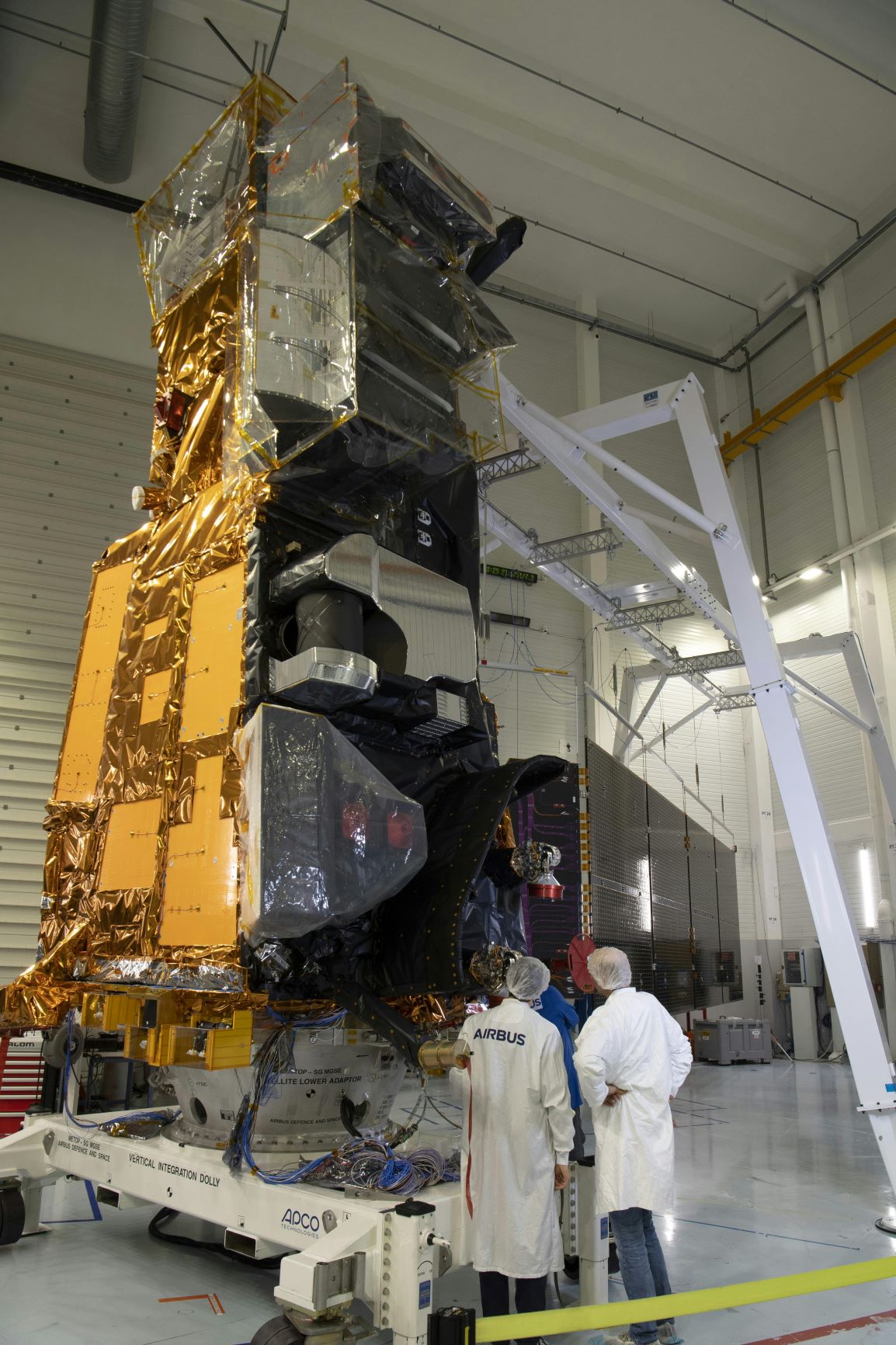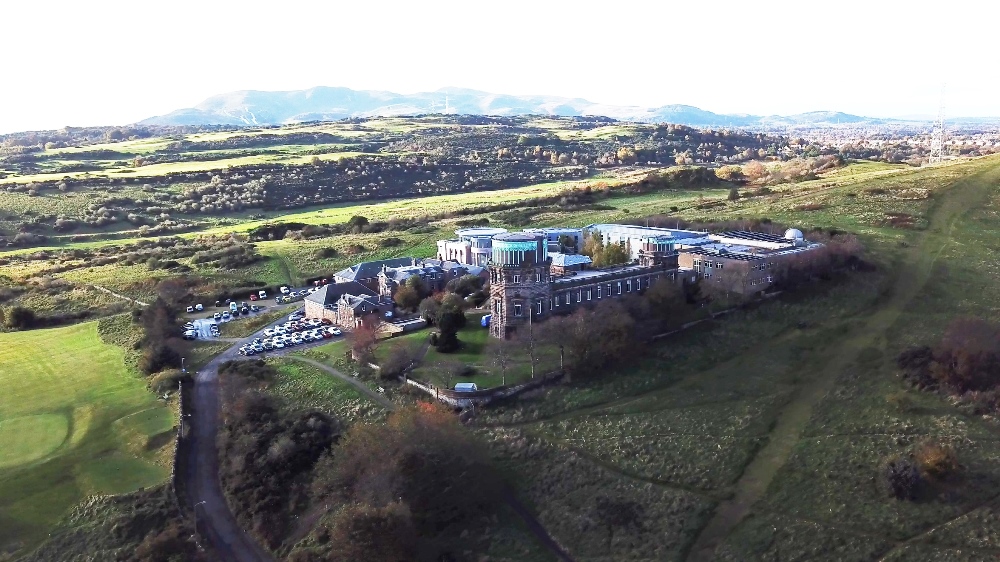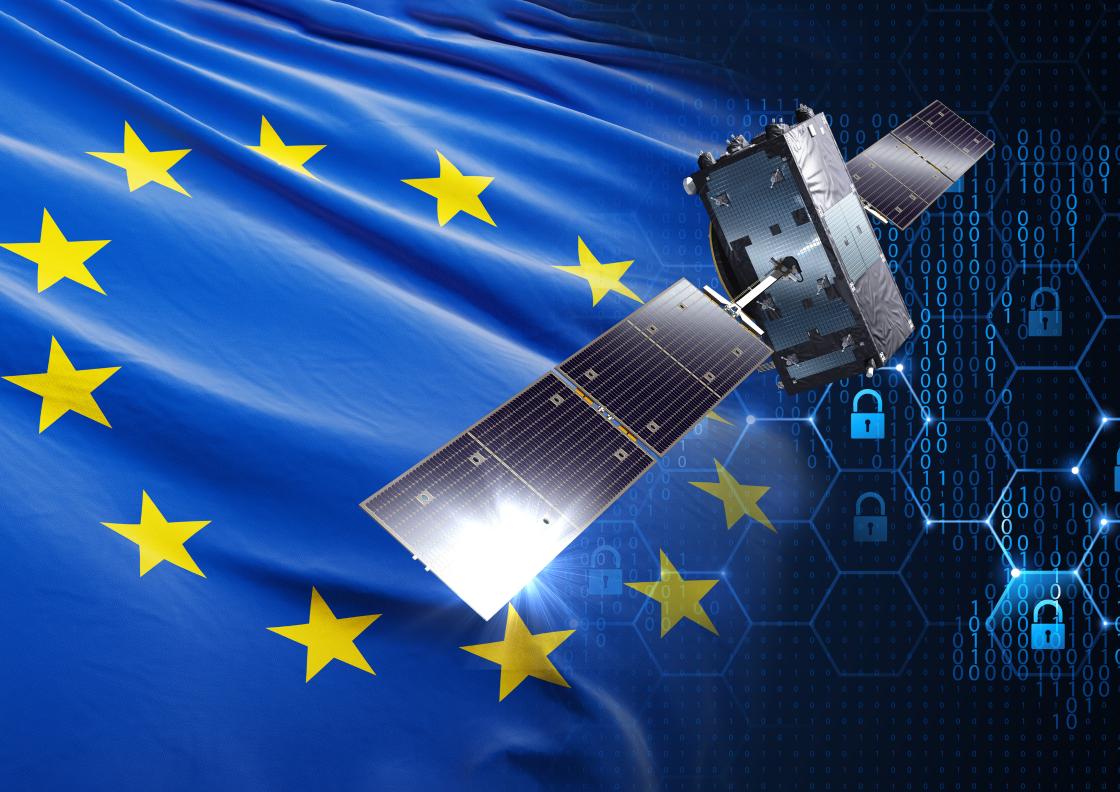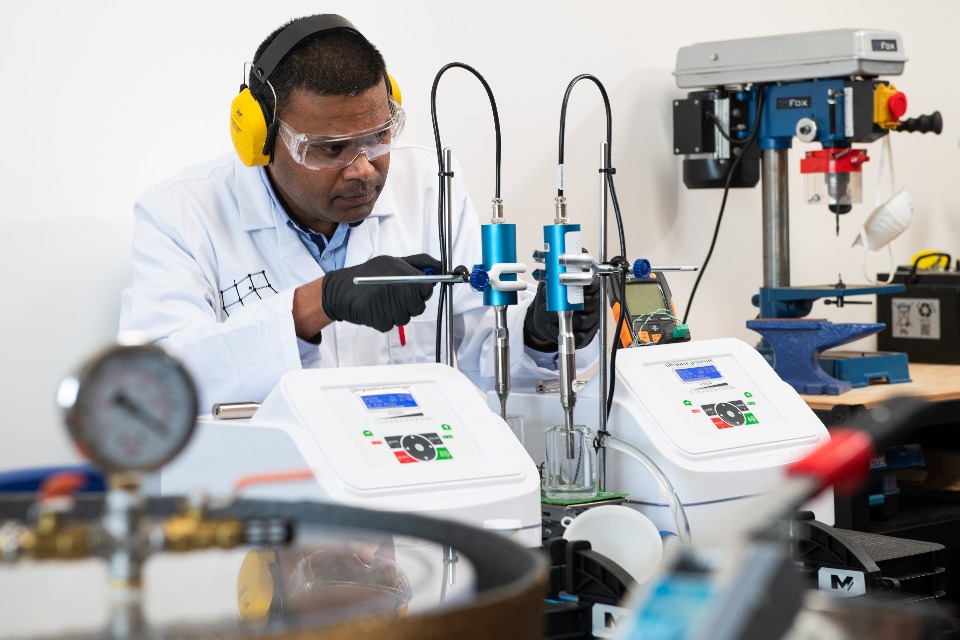Airbus completes manufacturing of the first MetOp-SG satellite

Image copyright Airbus
The satellite is now fully prepared for its upcoming mission, which is set to launch in August 2025, offering a wealth of new meteorological data to improve daily weather forecasting, climate monitoring, and atmospheric studies.
The integration of MetOp-SG A was completed in October 2024 at Airbus’ Toulouse facilities, with the installation of the Infrared Atmospheric Sounding Interferometer – New Generation (IASI-NG), the most complex of the satellite’s instruments. Five other instruments had already been integrated on-board: METImage (multi-spectral imaging radiometer), Copernicus Sentinel-5 (UVNS Spectrometer), 3MI (Multi-viewing Multi-channel Multi-polarisation Imager), MWS (Microwave Sounder) and RO (Radio Occultation). After the completion of this key milestone, the environmental test campaign was finalised demonstrating the spacecraft’s readiness for launch.
These satellites will carry an array of cutting-edge instruments designed to enhance the accuracy and efficiency of weather forecasting, with applications spanning regional and global scales. The satellites will offer unparalleled insight into climate change, air pollution, oceanography, hydrology, and other essential services such as disaster management. The MetOp-SG constellation consists of two series, A and B, each comprising three satellites. The A-series, built by Airbus in Toulouse (France), provides optical and microwave images and vertical profiles of atmosphere humidity, temperature, chemical composition, aerosols, as well as cloud detection. The B-series, built by Airbus in Friedrichshafen (Germany), on the other hand, is equipped with advanced microwave instruments, enabling measurement of precipitation, temperature at different atmospheric layers, and surface characteristics such as ocean winds, even through cloud cover. The upcoming MetOp-SG mission will play a vital role in enhancing our understanding of Earth’s evolving climate system, improving weather forecasts, and driving efforts to mitigate the effects of climate change.
Also integrated on-board MetOp-SG A is Copernicus Sentinel-5, a UVNS (Ultraviolet Visible Near-infrared Short-wave infrared Spectrometer) instrument that will contribute to the improved monitoring of air quality, changes in the ozone layer, and emissions from wildfires. Sentinel-5 is one of the so-called “atmospheric sentinels” which are built to answer questions related to the composition of Earth’s atmosphere: its mission is to globally monitor the distribution of atmospheric trace gases and aerosols (particulate matter) over the long-term in support of the European Union's climate monitoring programme Copernicus.
Airbus is leading an industrial consortium of over 110 companies across 16 European countries and Canada, contributing to the success of the MetOp-SG mission. The operational lifetime of each satellite is 7.5 years, with a 21-year operational coverage period across the full mission.
The MetOp-SG mission underscores Airbus’s long-standing expertise in the design and construction of meteorological satellites. With many years of experience, Airbus has led numerous successful space missions, including the previous MetOp series, and continues to contribute to ESA’s Earth Explorer and Copernicus programmes. Today, 16 Airbus satellites are involved in climate change monitoring and an additional 18 are in development that will measure key atmospheric constituents, land and sea topography, air quality, temperature and humidity, and snow and ice coverage. As a global leader in space technology, Airbus is committed to advancing sustainability efforts through its Earth observation capabilities, helping governments and organisations better understand and address the challenges of climate change.











